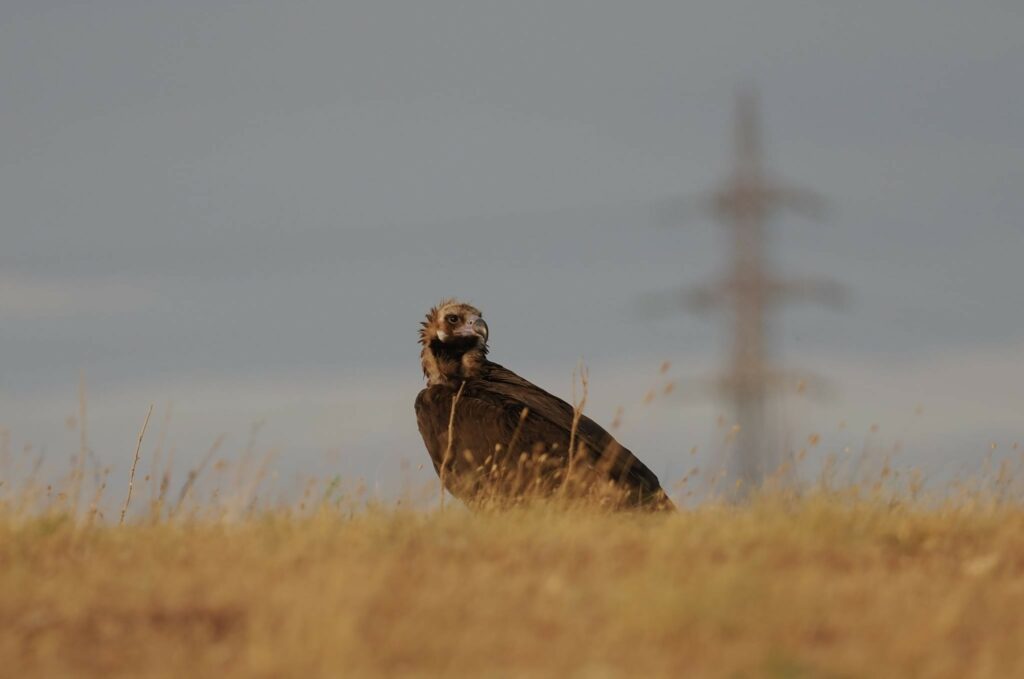
After months of preparation and a journey of 4,000 km by land, the 22 Spanish Cinereous Vultures finally arrived in Bulgaria, and these young birds are already adapting to their new home!
Largest-ever Cinereous Vulture Transport
Thanks to the healthy Cinereous Vulture population in Spain, Junta de Extremadura donated 22 more young birds to the Vultures Back to LIFE reintroduction project in Bulgaria. These individuals hatched in the wild during the last breeding season, but they needed to be rescued as they suffered from malnutrition and weakness. So, they entered the wildlife rehabilitation centres of Los Hornos and AMUS until they recovered. The recovered birds from Los Hornos then joined the rest of the Cinereous Vultures at AMUS to spend a pre-transport quarantine period and undergo all health and safety tests. A few months later, these birds were finally ready to leave Extremadura and head towards their new home! On 1 March 2020, the largest-ever transport of Spanish Cinereous Vultures began, organised by us at the Vulture Conservation Foundation (VCF). This time around, not only did the birds have to do health checks, but also so did the drivers. And due to the validity of the PCR test only lasting for a short time, the drivers travelled without stopping, making this the fastest Cinereous Vulture transport from Spain to Bulgaria. On 3 March, after travelling 4,000 km by land, crossing France, Italy, Slovenia, Hungary and Romania, they arrived in Bulgaria safe and sound.
Arrival at their new home
First, the transport service dropped off eleven Cinereous Vultures at Vratsa and then, after travelling for a little longer, the remaining birds at Sliven. Teams from the Green Balkans and the Fund for Wild Flora and Fauna (FWFF) welcomed the birds and got to work immediately. They performed more health tests to ensure that the Cinereous Vultures were fine following their long trip, and we are glad to say that all were in great physical condition! They further equipped the birds with unique identification rings before releasing the vultures in the acclimatisation aviaries located at the two different release sites.
Acclimatisation period before release
For the next few months, the Cinereous Vultures will remain in the acclimatisation aviaries. This process is a typical procedure for reintroducing the species, allowing the birds to get used to their new environment before exploring it themselves. At the same time, the Vultures Back to LIFE project teams will be providing food to the birds and monitoring their adaptation to ensure everything goes smoothly. Then, in about three months, the project team will equip some birds with GPS tags to monitor their movements and release them into the wild. Let’s hope these young Cinereous Vultures will grow to be healthy adults, managing to breed in the country in about five years, boosting the reintroduction efforts.

In other good news, during the same time, the FWFF also equipped and released three young Griffon Vultures from the Balkan population with GPS tags — one in Vrachanski Balkan and two in the Eastern Balkan Mountains (Sinite Kamani). This action was part of another important project, BalkanDetox LIFE, which aims to combat illegal wildlife poisoning by raising awareness and building capacities among key stakeholders. Tagging birds will enable the project team to monitor Griffon Vultures’ behaviour and movements across all important Balkan colonies, helping track and tackle illegal poisoning incidents!
Stay tuned with vulture news by following the VCF on Facebook and Twitter!
Vultures Back to LIFE

Led by the wildlife conservation charity Green Balkans, with activities also implemented by the Fund for Wild Flora and Fauna, and bringing together partners from Bulgaria, Spain and Germany, Vultures Back to LIFE aims to reintroduce the cinereous or Eurasian black vulture to Bulgaria. The team will transfer and release around 60 birds, some from captive-breeding, but mostly coming from wildlife rehabilitation centers in Extremadura (Spain) into the wild in Bulgaria as well as creating supplementary feeding stations and improving populations of wild herbivores, improving the nesting conditions and creating artificial nest sites and tackling some of the major threats to vultures in the country such as insulating electricity pylons and illegal use of poison in the nature.













